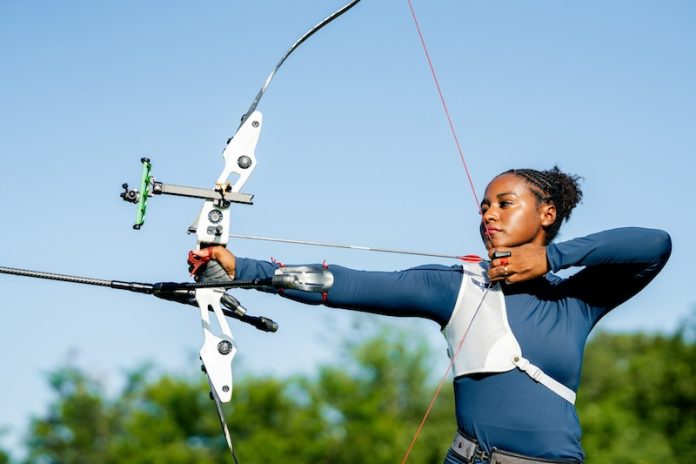
Olympic gymnast Stephen Nedoroscik, affectionately dubbed “pommel horse guy” by the internet, is capturing hearts not just for his bronze-winning talent, but also for his eyeglasses.
The bespectacled athlete has strabismus and coloboma, eye conditions that impact his vision.
In a TikTok video, Nedoroscik described his eyesight as “basically cross-sighted,” adding that he can switch his dominant eye on command.
As Team USA continues to celebrate Nedoroscik and his Clark Kent-style frames, Christopher Gappy, M.D., shares more about strabismus, coloboma and Nedoroscik’s impact on public perception of glasses.
What are strabismus and coloboma?
Strabismus is the misalignment of eyes.
In strabismus, the eyes can be crossed inward, wandering outward or vertically misalignment.
Coloboma is a missing part of the eye at birth. This is due to an embryologic abnormality.
It can be as mild as a cosmetic issue or it can be as significant as blindness. The location and size of the coloboma determines its severity.
How do these conditions impact children vs. adults?
Strabismus in children can lead to amblyopia, or “lazy eye,” where the brain has shut down that eye.
In adults, strabismus could lead to double vision and difficulty with depth perception.
Strabismus could also be a sign that the vision is down in one eye.
Coloboma affects children and adults similarly, and can vary in severity.
Stephen Nedoroscik has both conditions. How might having both impact your vision, and how might a person like him see the world? (i.e. do things look blurry, out of place, depth perception issues, etc.)
Strabismus, especially if present when younger, will lead to difficulty with depth perception and 3D vision. This makes athletics more difficult, but doable.
That’s what makes Stephen’s story even more remarkable.
While he’s used to his vision, he’s likely succeeding in spite of his diagnoses.
To be a medal winning Olympian is a great testament to how much he’s overcome, and his story will be used to inspire the kids we see on a daily basis with strabismus.
Why might someone, especially a person as active as Nedoroscik, choose glasses instead of contact lenses or other visual aids? Are there other aids or procedures that can help with these conditions?
Sometimes strabismus can be improved with refraction, which includes glasses wear, contact lenses or even refractive surgery like LASIK.
The specific type of strabismus determines which treatment may work best.
Glasses may be chosen over other options because they are easily accessible, or a person struggles with contact lens wear, or the glasses also protect the eyes (especially in cases where you have one strong eye and one weak eye, glasses help physically protect the good eye from an accident; I don’t think this is the case with Stephen.)
How does someone like Nedoroscik help combat stigma or negative associations with glasses or eye conditions? Why is this important for young people in particular?
Glasses absolutely hold a stigma, especially in younger children.
Having role models who wear glasses, like Clark Kent, famous athletes or actors, and Stephen now, help to combat that stigma. Especially in young children who are becoming self-conscious about their looks, it’s difficult to get compliance in children.
Written by Tessa Roy.
If you care about eye health, please read studies about how vitamin B may help fight vision loss, and MIND diet may reduce risk of vision loss disease.
For more information about eye disease, please see recent studies about how to protect your eyes from glaucoma, and results showing this eye surgery may reduce dementia risk.



